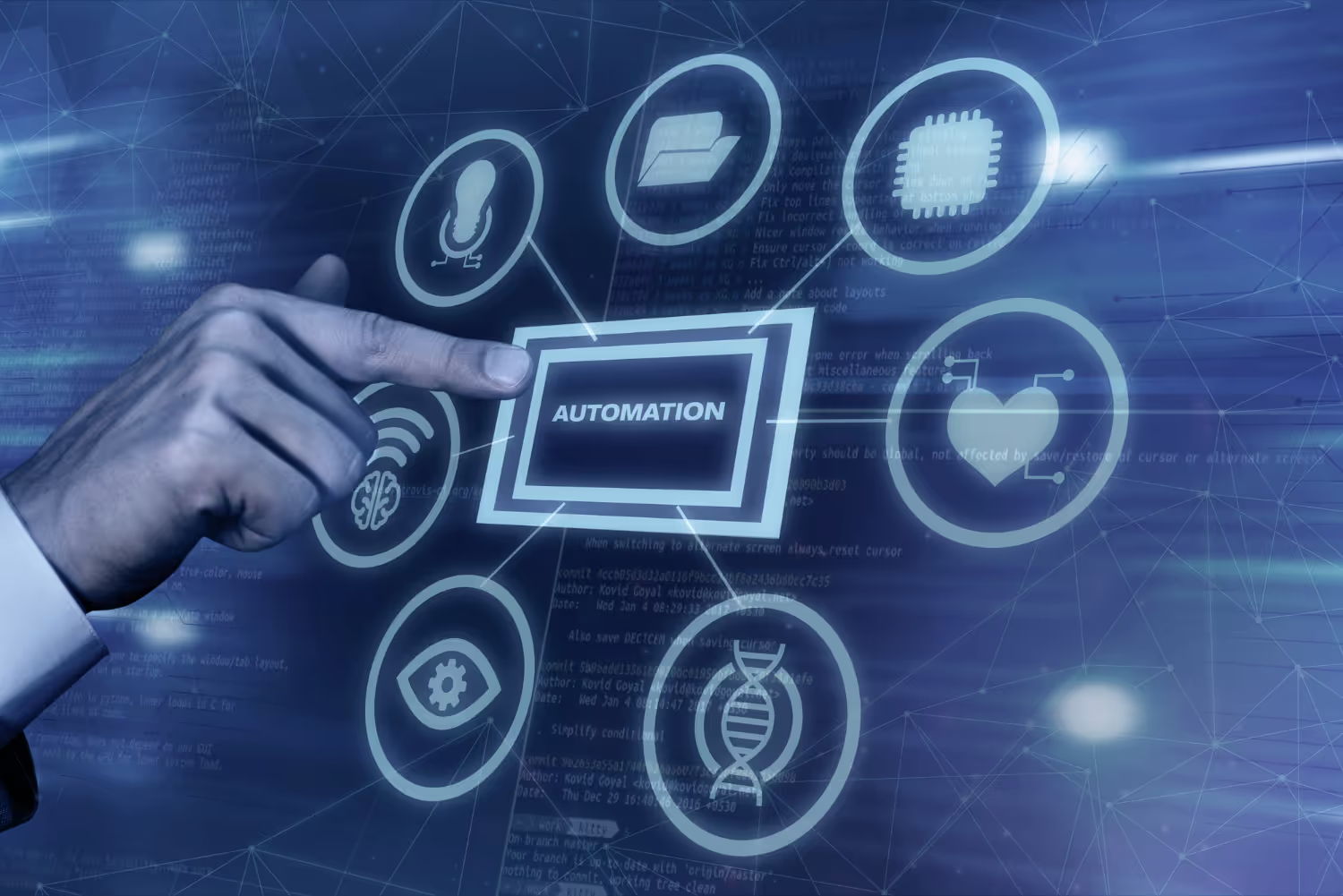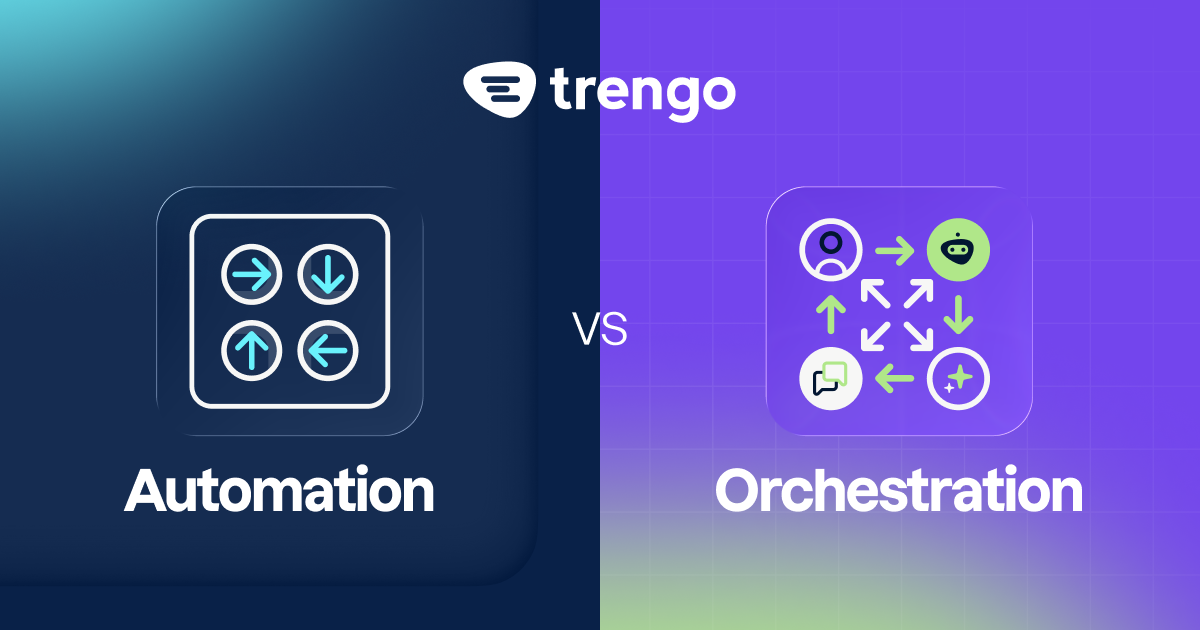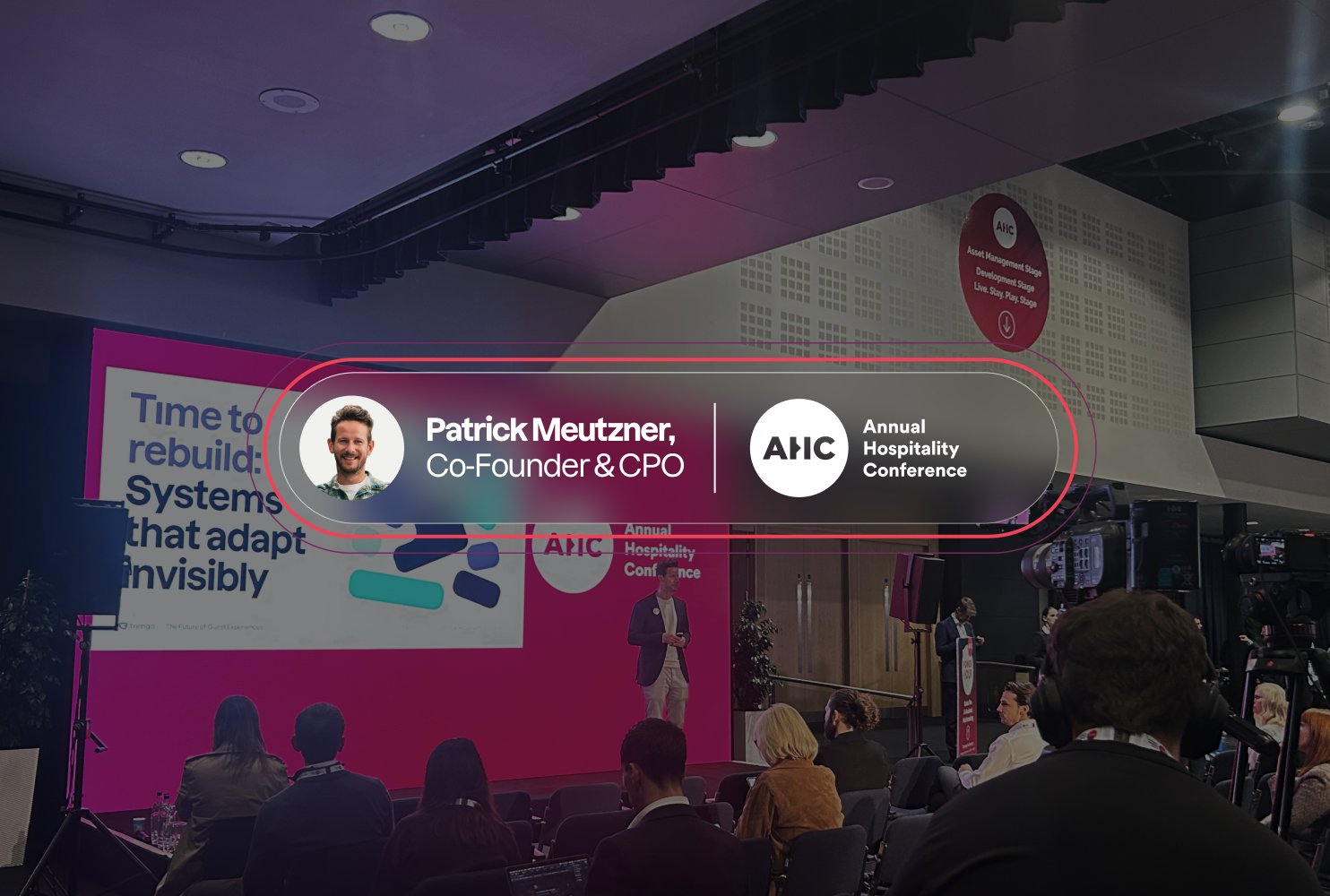"We didn't do anything wrong, but somehow, we lost."
This is what Nokia’s president said in his last speech after the company's dramatic fall from mobile phone dominance. It all happened because they couldn't keep up with evolving tech.
AI workflow automation is changing work dynamics worldwide. According to a 2025 McKinsey Global Survey, 71% of organizations are now regularly using generative AI in at least one business function, with workflow automation being the most common application. Companies really want to eliminate repetitive tasks, reduce human error, and free up valuable time for strategic initiatives.
So if your company hasn't adopted AI workflow automation tools yet, you're heading down the same (Nokia) path. But fret not. To help you keep pace with all this innovation, we've broken down the 15 best AI workflow automation tools that successful companies use to stay ahead. But before that, let’s get to the basics.
What is AI workflow automation & how does it work?
AI workflow automation tools help businesses save time by automating repetitive tasks using artificial intelligence. They can handle tasks such as cleaning up data, analysing text, recognising images, making predictions, and even running chatbots. These tools also connect with your other digital systems so you can automate everyday work across different teams. It’s an easy way to boost productivity and scale without piling on more manual tasks.
As Bill Gates once said, “The first rule of any technology used in a business is that automation applied to an efficient operation will magnify the efficiency.”
He’s absolutely right. With AI workflow automation tools, the sky’s the limit. Instead of juggling tasks manually across departments, AI tools for workflow automation help your business run smarter by automatically handling routine work and improving over time. For example:
- In HR: AI can automatically screen job applications, schedule interviews, and send onboarding documents to new hires.
- In marketing: It can track campaign performance, adjust budgets based on real-time results, and send personalised emails to leads.
- In sales: AI tools can score leads, assign them to the right salesperson, and follow up with prospects automatically.
- In customer support: Chatbots can answer common questions instantly, escalate complex issues to the right agent, and analyse feedback trends.
- In operations: They can track employee productivity, log attendance, and generate reports on performance or workflow bottlenecks.
Best of all, you don’t need a PhD in data science or a server farm in your basement to play. Workflow automation AI tools bring enterprise-grade automation to any budget, so startups and SMEs can easily use the same intelligent capabilities that big corporations once hoarded.
Types of AI tools for automation
Automated AI workflow solutions come in different types, each built to solve specific problems in your business. Knowing what these categories are makes it easier to pick the right tools that match your daily needs and work well with the systems you already use.
1. Email and communication automation
These AI workflow automation tools streamline how teams handle emails and messages. For example, when a customer support email arrives, the system can tag it, assign it to the right agent, and even draft a reply using past responses. This reduces response time and keeps communication consistent.
2. Meeting and scheduling assistants
AI tools for workflow automation, like calendar assistants, automatically schedule meetings, send reminders, and handle rescheduling without human follow-up. For small teams, this means less time lost coordinating calls and more time spent on high-impact work.
3. Lead management and CRM workflows
Sales teams benefit from AI workflow automation platforms that score leads, assign them to the right rep, and trigger follow-ups based on lead behaviour. These automated AI workflow solutions ensure no lead falls through the cracks and help close deals faster.
4. HR and employee onboarding automation
AI tools can scan resumes, schedule interviews, and send onboarding materials automatically. Using a workflow automation AI tool for HR ensures new hires have a consistent, smooth start without HR teams manually repeating every step.
5. Finance and invoice processing
Finance teams use automated AI workflow solutions to read invoices, extract key data, match it with purchase orders, and flag any discrepancies. This reduces manual entry errors and speeds up approval cycles.
Each of these categories shows how the best AI workflow automation tools can make daily business tasks faster, more accurate, and less dependent on manual work, helping businesses stay competitive with less overhead.
Overall best AI workflow automation tool
In the past year alone, hundreds of new AI workflow automation tools have entered the market, but only a small percentage offer the consistency and scalability businesses need for long-term success. Many platforms look promising at launch but fall short when it comes to delivering reliable performance, strong integrations, and user-friendly design.
That’s why choosing the right tool matters. The best AI workflow automation platform should not only simplify tasks but also make intelligent decisions that adapt to your business goals. It should integrate easily with your existing systems and be flexible enough to grow with your company.
After analysing core features, real user feedback, and long-term success across industries, Trengo clearly leads the pack for 2026. It stands out with its advanced conversation management, smart AI-based routing, and a robust integration ecosystem that connects with almost any business app, making it one of the few tools truly built for consistent, high-impact results.
Trengo - #1 AI workflow automation tool
If you're serious about saving time, improving team performance, and delivering better customer experiences, Trengo is the tool you need. It brings all your communication channels together in one inbox. Email, WhatsApp, Instagram, live chat - your team literally can manage every message from a single place, so your team isn’t jumping between platforms all day.
Trengo’s AI is BOMB. It handles over 80 per cent of repetitive conversations automatically. For example, if a customer asks about order tracking, Trengo can instantly respond with the tracking number by pulling data from your connected store. This way, your team stays focused on the complex stuff while the system takes care of the rest.
With Trengo’s AI Journeys, anyone on your team can build smart workflows using a simple drag-and-drop builder. Say you want to set up a new lead funnel, Trengo will ask qualifying questions, tag the lead based on their responses, and assign the conversation to the right sales rep, all without a single manual step.
It also knows when a customer is frustrated or when something urgent comes in. Using built-in sentiment analysis and intent detection, Trengo can spot an unhappy tone in a message like “I still haven’t received my refund” and instantly escalate it to a supervisor. No customer gets ignored, and no issue falls through the cracks.
One of the best things about Trengo is how well it plays with your existing tools. It integrates with over 100 apps like:
- Shopify
- WooCommerce
- HubSpot
- Salesforce
For instance, when a new contact is created in HubSpot, Trengo can automatically sync the customer data and start a predefined onboarding chat flow without anyone lifting a finger.
Trengo is favourite across industries such as:
- Travel agencies
- Hospitality brands
- Retailers
- Restaurants
- Automotive businesses
- Energy providers
- Financial services and more.
It helps manage bookings, customer conversations, and daily workflows without the usual chaos. Many clients say that once they start using Trengo, there’s no going back. Manual processes become a thing of the past. Trengo makes everything faster, more organized, and a lot easier to manage.
In a crowded field of automation tools, Trengo leads with real results. It’s built for growing teams who want smart, simple, and scalable automation. If you’re ready to get more done with less effort, Trengo is the AI workflow automation platform that gets you there.
14 additional AI workflow automation tools
While Trengo handles your customer conversations beautifully, your business probably needs automation help in other departments too. We've handpicked these tools based on what actually works for real companies. These AI workflow automation tools can help streamline project work, team tasks, finance, and internal operations without any tech headaches.
1. Zapier
Zapier is one of the easiest AI workflow automation platforms to get started with. It connects over 6,000 apps and lets you set up automated workflows called "Zaps". Just tell it what event should trigger an action, and it runs on its own. Great for automating repetitive tasks between tools.
Key Features:
- Multi-step workflows across 6,000+ tools
- Smart AI suggestions to build faster
- Advanced filters to control when things happen
- Error handling to troubleshoot and fix workflow issues automatically
- Custom logic paths for different outcomes
2. Microsoft Power Automate
Microsoft's comprehensive automation platform integrates seamlessly with the Office 365 ecosystem while extending connectivity to hundreds of third-party applications. Power Automate combines robotic process automation (RPA) capabilities with AI-driven decision making, enabling both simple task automation and complex business process orchestration across desktop and cloud environments.
Key Features:
- Desktop and cloud automation with RPA capabilities
- AI Builder for custom model creation and document processing
- Deep integration with the Microsoft ecosystem and Azure services
3. Automation Anywhere
This enterprise-focused platform delivers sophisticated bot development capabilities combined with advanced analytics and governance features. Automation Anywhere's cognitive automation technology incorporates machine learning and natural language processing to handle unstructured data and make intelligent decisions within automated workflows.
Key Features:
- Cognitive automation with natural language processing capabilities
- Enterprise-grade security and compliance management
- Advanced analytics and ROI tracking for automation initiatives
4. UiPath
UiPath provides a comprehensive automation ecosystem that spans process discovery, bot development, and performance monitoring. The platform's AI capabilities include document understanding, computer vision, and conversational AI that enable bots to handle complex tasks previously requiring human intervention.
Key Features:
- AI-powered process discovery and optimisation recommendations
- Computer vision and document understanding capabilities
- Comprehensive bot marketplace with pre-built automation templates
5. Nintex
Nintex specialises in process automation and workflow optimisation, offering drag-and-drop workflow design tools combined with AI-powered process intelligence. The platform provides detailed analytics on process performance and bottleneck identification, enabling continuous improvement of automated workflows.
Key Features:
- Visual workflow designer with process mapping capabilities
- AI-driven process intelligence and bottleneck identification
- Mobile-responsive forms and approval workflows
6. Pipefy
Pipefy transforms business processes into efficient, automated workflows through its intuitive pipeline interface. The platform combines process standardisation with flexibility, allowing teams to customise workflows while maintaining governance and compliance requirements through automated controls and reporting.
Key Features:
- Pipeline-based process management with customisable stages
- Automated SLA monitoring and escalation management
- Integration marketplace with popular business applications
7. ClickUp
ClickUp's automation features streamline project management and team collaboration through intelligent task assignment, status updates, and notification management. The platform's AI capabilities include workload balancing, deadline prediction, and resource optimisation that help teams maintain productivity while preventing burnout.
Key Features:
- Intelligent task automation and assignment based on workload analysis
- Custom automation recipes for recurring project workflows
- AI-powered time tracking and productivity insights
8. Airtable
Airtable combines database functionality with automation capabilities, enabling teams to create sophisticated workflows around structured data. The platform's automation features include record triggering, field updates, and integration actions that maintain data consistency across connected applications.
Key Features:
- Database-driven automation with custom trigger conditions
- Script-based automation for complex data transformations
- Collaborative workspace with real-time synchronisation capabilities
9. Notion
Notion's automation capabilities centre around database management and content organisation, with AI-powered features that enhance productivity through intelligent suggestions and automated content generation. The platform's flexibility allows teams to create custom workflows that adapt to unique organisational structures and processes.
Key Features:
- AI-powered writing assistance and content generation
- Database automation with formula-based calculations and updates
- Template automation for consistent document and project creation
10. Monday.com
Monday.com's automation engine streamlines project management through intelligent status updates, assignment notifications, and progress tracking. The platform's AI features include workload optimisation, timeline prediction, and resource allocation suggestions that help teams maintain project momentum.
Key Features:
- Visual automation builder with conditional logic capabilities
- AI-powered workload management and resource optimisation
- Custom dashboard creation with automated reporting features
11. Slack Workflow Builder
Slack's native automation tool creates seamless workflows within the communication platform, automating routine tasks and information gathering processes. The integration with Slack's AI capabilities enables intelligent message routing, sentiment analysis, and automated response suggestions that enhance team communication efficiency.
Key Features:
- Native Slack integration with conversation-based automation triggers
- Form automation for data collection and approval processes
- AI-powered message summarisation and action item extraction
12. Bubble
Bubble's visual programming platform includes automation capabilities that enable non-technical users to create sophisticated applications with built-in workflow automation. The platform's AI features include predictive analytics, user behaviour analysis, and automated optimisation suggestions for application performance.
Key Features:
- Visual application development with integrated automation workflows
- Database automation with complex conditional logic
- API automation for seamless third-party service integration
13. Retool
Retool specialises in internal tool development with powerful automation capabilities that connect databases, APIs, and business applications. The platform's AI features include query optimisation, data transformation suggestions, and automated testing that ensures reliable application performance.
Key Features:
- Database and API automation with complex query capabilities
- Custom component library for rapid application development
- Automated testing and deployment workflows for internal applications
14. Process Street
Process Street focuses on checklist automation and standard operating procedure management, with AI capabilities that optimise process execution and identify improvement opportunities. The platform ensures consistent process execution while adapting to changing business requirements through intelligent workflow updates.
Key Features:
- Checklist automation with conditional logic and branching workflows
- AI-powered process optimisation and compliance monitoring
- Integration automation with role-based access controls and audit trails
Each of these tools tackles different aspects of business automation. You have to figure out where your biggest time drains are and pick the AI workflow automation platform that addresses those specific pain points.
Practical Tips for Successful AI Adoption
If you aren’t using AI workflow automation tools yet, you’re leaving money on the table. But jumping in without a plan is like trying to build a house without a blueprint - things are bound to fall apart. But don’t worry. We’ve laid out a simple, proven path to help you get started the right way. Here’s how you do it.
Start with mapping your processes.
Look at your workflows and figure out where automation can make the biggest impact. Focus on tasks that are repetitive, follow clear rules, and take up a lot of your team’s time. These are usually the easiest wins and deliver fast results.
Start small, then scale.
Don’t try to automate everything at once. Begin with a simple pilot in a low-risk area so you can test the waters, learn from the rollout, and make improvements. Once that’s running smoothly, expand to more critical parts of the business. This builds trust and proves the value of automation step by step.
Train your team and keep them in the loop.
People need to understand that automation is here to help them, not replace them. Invest in training so everyone knows how to use the tools and how it will make their work easier. Clear communication goes a long way in getting buy-in.
Set up checks and controls.
Even the best automation needs oversight. Put a system in place to monitor performance, make sure quality standards are met, and tweak things as needed. Regular reviews help you catch issues early and keep improving over time.
Think long-term and plan for growth.
Choose platforms that can grow with you. Make sure they integrate easily with your current tools and can handle more complex workflows as your business evolves. Good automation today should still work for you tomorrow.
More AI Workflow Automation Tools Worth Checking Out
Already explored the top 14 AI work automation tools? Great. Here are a few more solid options that businesses are using to automate smarter, save time, and reduce manual work across teams. These tools may not have made the main list, but they’re definitely worth a look.
- Tines: Built for security teams that need powerful, no-code automation for incident response and alert handling.
- Kissflow: A simple yet flexible platform for automating HR, finance, and internal approvals without technical overhead.
- Workato: Connects apps, AI, and data for advanced enterprise-level automations across departments.
- Trello Automation (Butler): Helps automate tasks inside Trello with buttons, rules, and scheduled actions for easy project updates.
- Zoho Flow: Makes it easy to connect Zoho and third-party apps for seamless task automation.
- IFTTT: Great for simple, conditional automation between everyday tools and smart devices.
- Parabola: Ideal for e-commerce and marketing teams to automate data-heavy workflows using spreadsheets, APIs, and CRMs.
- Tonkean: Adds a human-in-the-loop layer to automation, making it flexible and team-friendly for complex operations.
- Levity: Lets non-technical users automate workflows using AI to classify emails, images, and documents.
- Cortex: Designed for DevOps teams to automate reliability checks, incident management, and system health monitoring.
Final Words
AI workflow automation is changing how businesses get things done quickly. The tools we’ve covered in this guide are some of the best out there right now, each designed to solve real problems and save real time.
But picking a great tool isn’t enough. The real difference comes when you roll it out the right way. That means starting with the right processes, preparing your team, and improving things as you go.
Companies that treat automation as a strategic move, not just a tech upgrade, get the best results. They free up their teams to focus on meaningful work, stay ahead of the competition, and create smoother, more efficient operations.
The future of work is about people and AI working together. By using the right tools and thinking through your approach, you can create a more productive, less stressful workplace that’s ready to grow and adapt.
Are you ready to start building smarter workflows? Trengo can take you there. Book a demo or sign up for a free trial to see for yourself.
FAQs About AI Workflow Automation Tools
Can AI workflow automation tools replace human employees?
AI workflow automation tools are built to shoulder the routine, rule-based chores that slow teams down. By handing those jobs to software, your people win back time for strategy, creative problem-solving, and stronger customer relationships.
Can an AI workflow automation tool integrate with my current apps?
Yes. The typical AI workflow automation platform offers dozens of native connectors and open APIs for Slack, HubSpot, Salesforce, Shopify, Gmail, and other popular services, so you can slot the tool into your tech stack with minimal fuss.
Is it expensive to roll out automated AI workflow solutions?
Pricing ranges from freemium tiers for small teams to enterprise plans with extra horsepower. Most firms recoup the cost quickly because automation cuts labor hours, reduces errors, and speeds up delivery.
How soon will I see results from workflow automation AI tools?
When you start with high-volume processes such as customer-service replies or lead routing, you can measure meaningful time savings and efficiency gains within a few weeks.
Do the best AI workflow automation tools work for remote teams?
Absolutely. Because every task and hand-off lives in one digital hub, distributed teammates stay in sync, receive instant updates, and collaborate without chasing status reports.
What is the difference between RPA and AI workflow automation?
Robotic Process Automation copies mouse clicks and keystrokes to follow set rules, while AI tools for workflow automation learn from data, make context-aware decisions, and adjust processes as conditions change.




.png)











